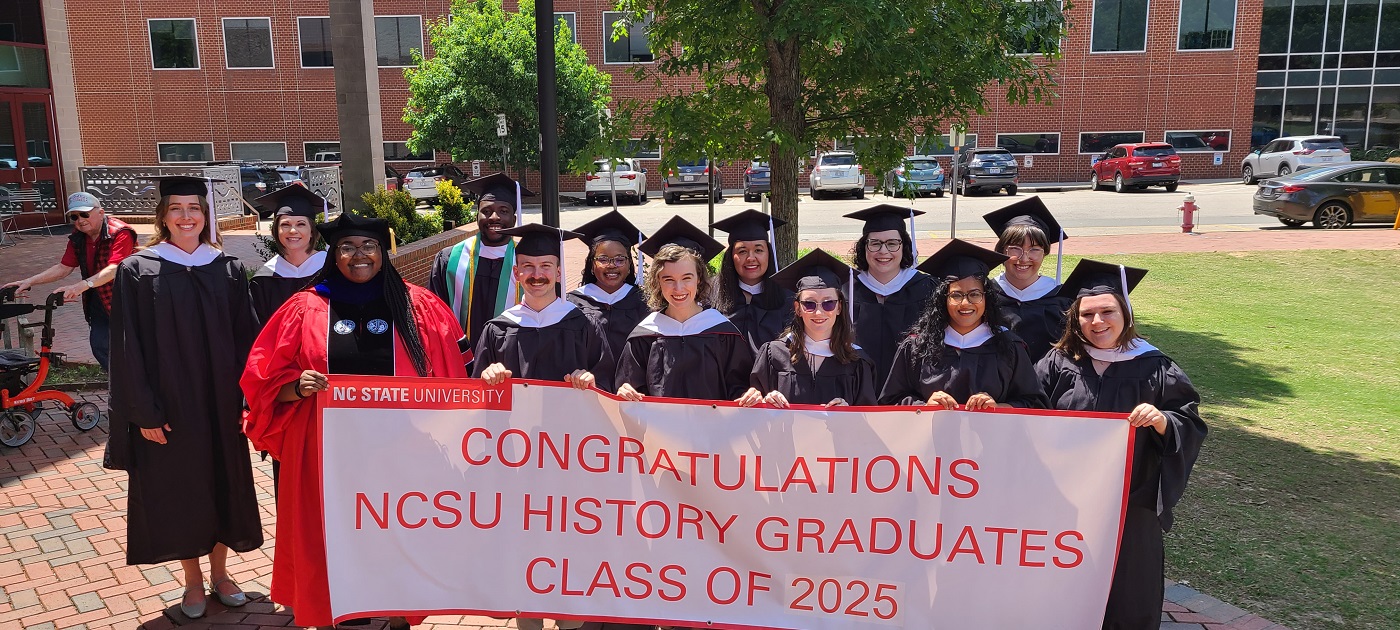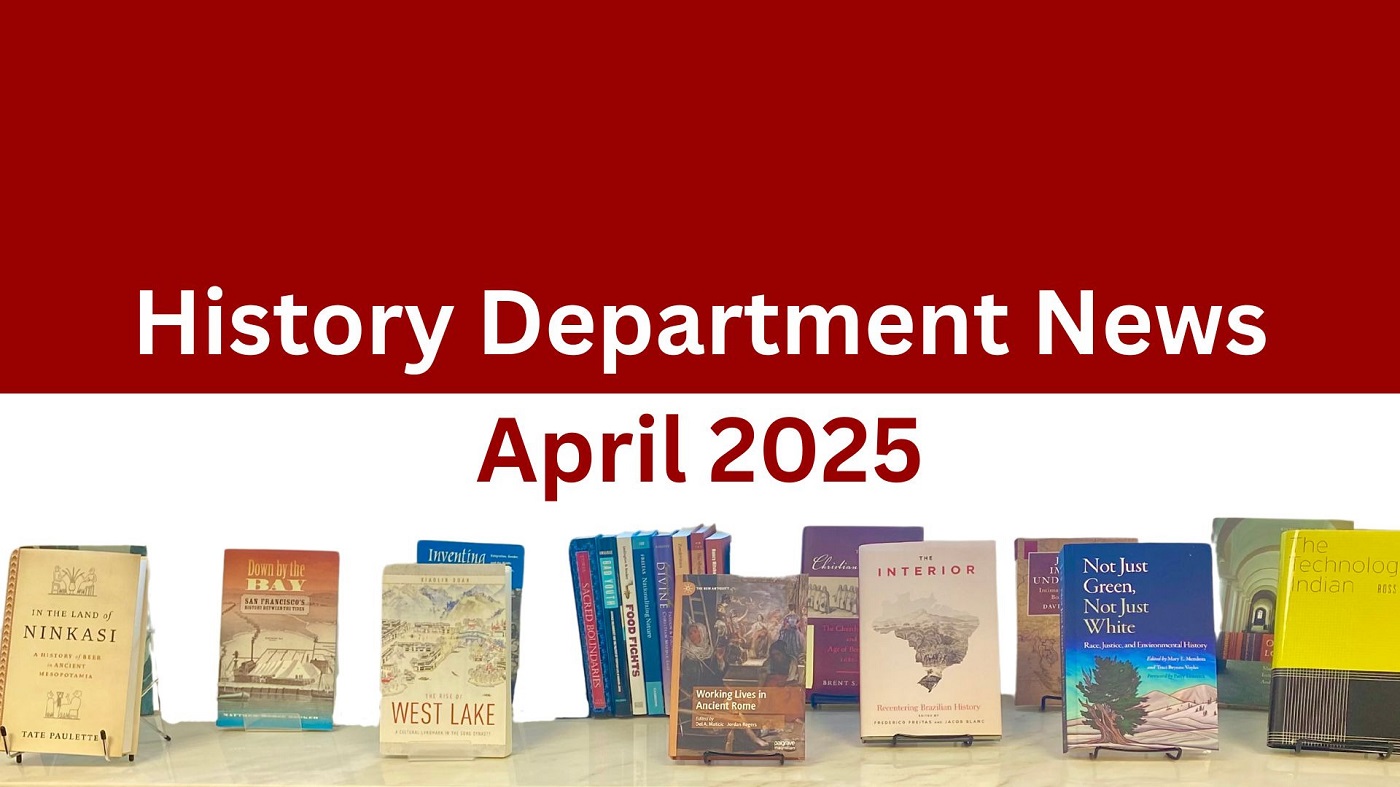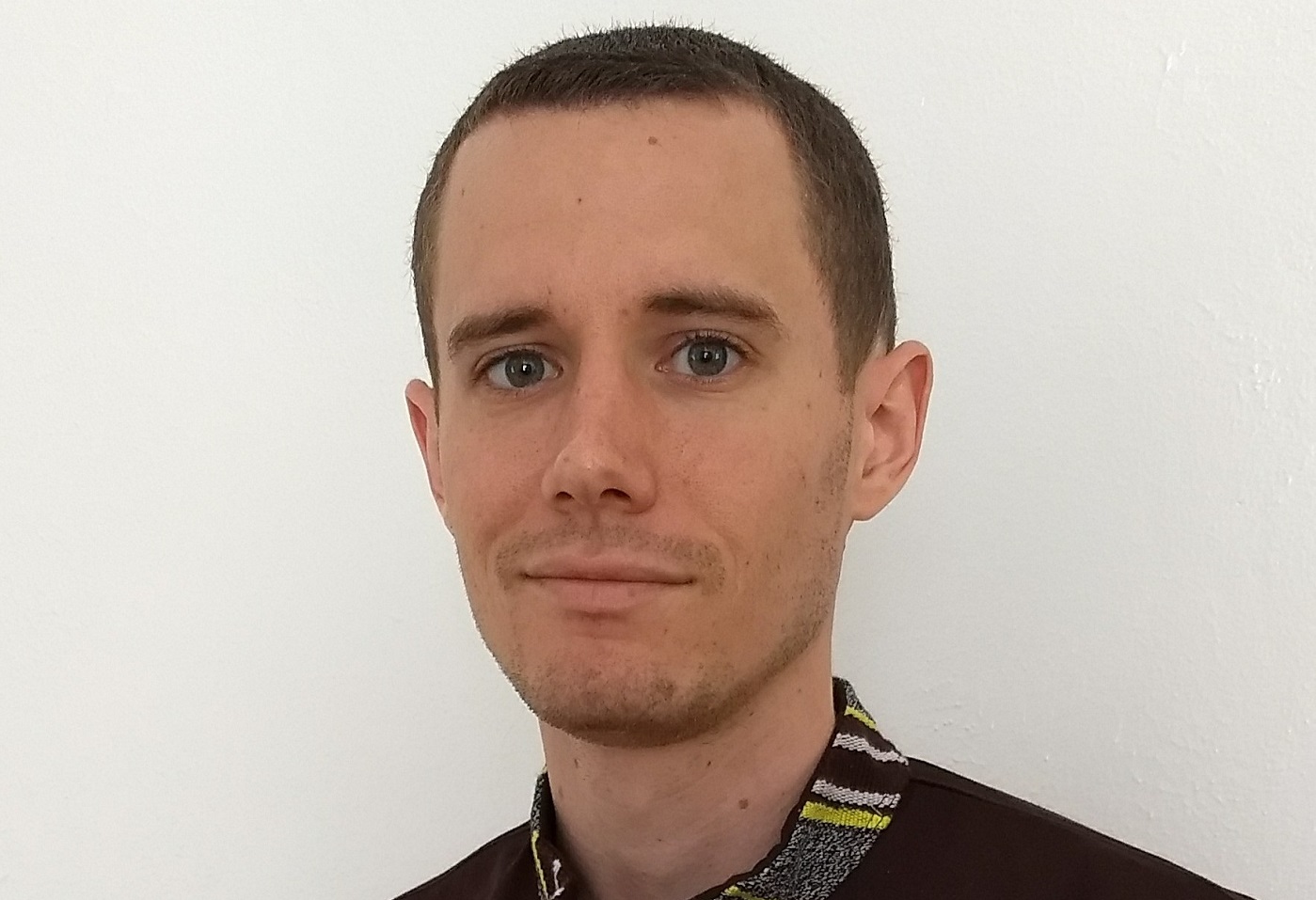Careers in Public History Series
I sat down with HGSA co-President and Public History PhD student, Katie Schinabeck, to talk about the History Department’s recently launched Careers in Public History Series.
What is the Careers in Public History Series?
This is a series where the history graduate students visit historic sites and museums in Raleigh to meet with senior staff members and talk with them about the site and the benefits of working there as well as interpretive challenges they might have and how their various stakeholders influence the stories they tell. They also discuss their own careers and how they got to the level they’re at.
So this is History and Public History students who are visiting the sites?
Yes. History Masters students often ask the question – what can I do with my Masters degree? Just because their degree doesn’t say “Public History” on it doesn’t mean that they can’t work in this part of the field. So I wanted to make it clear that this was something that could be beneficial to them as well.
When did the series launch?
It started last year and the students visited four different sites throughout the year. I wanted to continue it this year because last year the site visits resulted in one student getting an internship and another one getting a part-time job. It was clearly a great way to make connections and find volunteer or job opportunities. Additionally most of the people we meet with at the sites graduated from our program so it’s a really great way to keep them connected to our program. It’s not just important to our students, but it’s important for our alumnae to interact with our current students.
How do you decide which sites to visit?
I tried to go to sites that hadn’t been visited last year and I tried to include sites that I hadn’t been to personally, because if I haven’t been there then potentially other people haven’t been there with classes, etc. So we ended up going to the Joel Lane House, the City of Raleigh Museum (which we had gone to last year but I just think it’s really excellent). We also went to Mordecai Historic Park and the Governor’s Mansion.
Is it always the HGSA co-Presidents that coordinate the visits?
Yes – it was this year and last year.
So you’ll pass on that knowledge to the new co-Presidents in the hope that they’ll continue the series?
Yes and after two years of doing the series we have a really good idea of what’s working and what is not and now we have ideas about how to move it forward and make it really successful. I’m hoping that if the co-Presidents do continue this next year they’ll be able to take our suggestions and get even greater participation and buy-in.
What are some highlights of the Series?
A major highlight was when we met with the (now former) Executive Director of the Joel Lane House. She has a Masters degree in History with a concentration in Public History, but she worked outside the public history field (in higher ed) for several years after she graduated and then came back into the field after some time. I think many of us have that concern about graduating and whether we’ll find a job in our field. Meeting someone who could talk about working outside of the field for a while, and used their history skills at the job they were doing, but then ultimately returning to the field was so beneficial. It solidified, for me, why this series was a useful thing for us to be doing.
I believe that, in general, the connections we’re making with alums from our program are so valuable. I enjoy meeting them and I like stepping out of the academic realm for an afternoon. To be able to go to a historic site and talk with someone who is doing it is just so helpful because they talk about things that you can’t get into in class, and sometimes you don’t want to get into in class because you have different goals in the classroom. You really get a different perspective.
At the sites you visit are you getting the basic spiel that they give tourists or are they tailoring it for you as History students who may one day have a job like they do?
They do give us the spiel but then they add-on discussions of why they’re doing this or that thing and the comments people may have, and the myths they have to dispel. It is very much geared to us because they know what we’re learning in school but they are also making sure we are getting the basic historical content because they need to build on that to get to the nitty gritty stuff that we’re really interested in.
What was the tour of the Governor’s Mansion like?
It started out with a tour of the first floor – the dining room and sun room. We then sat down for lemonade and cookies with their interpretive specialist who has a Masters in Public History from NC State. We talked explicitly about the move from grad school into the field where you always have to answer to someone and there’s different stakeholders. She had interesting things to say about the things she had learned in the field since graduating and the constraints that had led her to do x and y things.
Did it make you feel concerned that you might one day have to deal with those types of constraints?
No, because I’ve worked in the field enough to have a pretty good understanding of those constraints. I bring that into my classroom experiences and try to have an awareness of the internal politics of museums and historic sites. For me, site visits are more of a reminder that these are extra considerations that you’re always going to have rather than – “oh I’m sad that this is the way the field works”. It’s not always the way you talk about it in the classroom. But that’s fine because we shouldn’t be taught to be pessimistic about our work. We should be taught to have big ideas and be idealistic and then we should adapt.
It’s complicated and it’s a debate within Public History education on how to train students and how to bridge that gap between being pessimistic about some of the constraints in the field and idealistic about the immense potential of public history to make the world a better place. I believe Public History professors are aware of this – they aren’t ignorant of the real world realities and aren’t blindly training us to be idealistic. They teach very intentionally and they often are realistic but still we are in a classroom setting – we don’t have the same constraints or stakeholders as museum professionals.
So for instance at the Governor’s Mansion guides will talk about the history of the building and why certain furnishings are there and they talk about past governors and stories, but they are aware that they can’t push an agenda. They work for the state and there are stakeholders.
Were there any sites you wanted to visit but couldn’t?
I wanted to meet with someone who doesn’t work at a public historic site but does contract work. I know of a woman who does consulting but I already had scheduled these four other visits so perhaps that will be something for the future.
It’ll be interesting to see how the series evolves over time but so far its been very valuable for our students.
- Categories:


